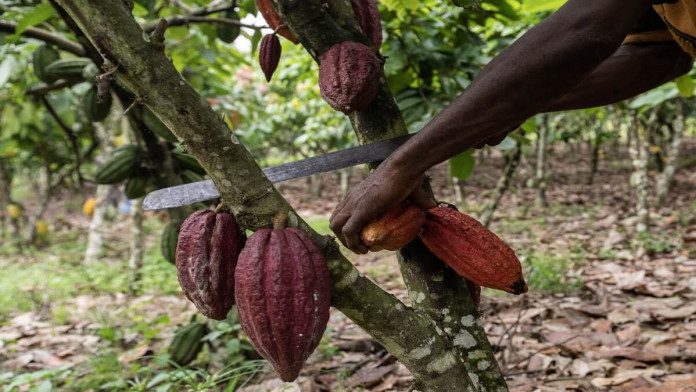News in Brief:
– A surge in cocoa prices in Uganda’s Bundibugyo district has led to increased thefts, forcing farmers to form security groups and even harvest unripe cocoa.
– This rise in price is due to global market factors and positions Uganda as a key producer of high-quality organic cocoa.
A surge in cocoa prices has led to a rise in cocoa theft in Uganda’s cocoa-growing Bundibugyo district, according to a local news report. With cocoa prices reaching a record high of Shs35,000 (USD$258.78) per dry kilogram, farmers are struggling to protect their crops from thieves targeting their valuable harvest.
The price increase, the first significant one in over a decade, has come as a welcome boost to farmers’ profits. However, it has also attracted unwanted attention. Farmers are enduring sleepless nights guarding their crops, with some even resorting to harvesting unripe cocoa to avoid losses from theft.
Local security groups, called Wemble, have been formed to patrol villages at night and deter thefts. Despite their efforts, thefts are still occurring, often allegedly involving collaboration between local youths and outsiders.
Bundibugyo district agriculture officer, Paul Murungi, attributes the rise in thefts to a combination of factors. He said it could be attributed to youths without their own cocoa farms, looking for a quick profit, with some farmers stealing from their own previously sold crops due to buyer underestimation before the price increase.
More broadly, Murungi highlights a global cocoa market with high demand and reduced supply from key producers in West Africa like Cameroon and Ivory Coast. These countries are battling declining production due to factors like disease outbreaks and rehabilitation of old cocoa trees, These adverse effects have created an opportunity for Ugandan cocoa.
Generally, Ugandan cocoa is known for its high quality and organic production, attracting buyers seeking a healthy alternative. Agricultural experts like Murungi have subsequently advised farmers to maintain good field hygiene to protect their crops from future pests and diseases to attract needed attention.



